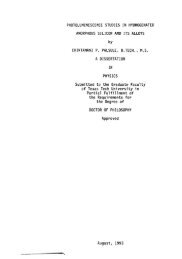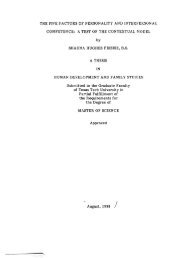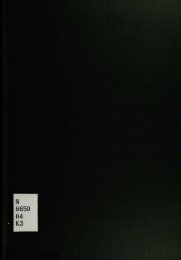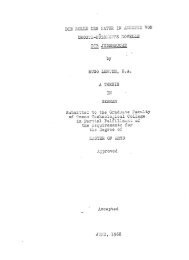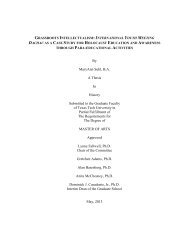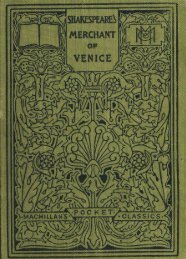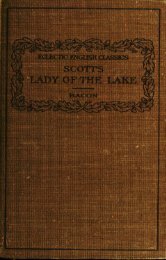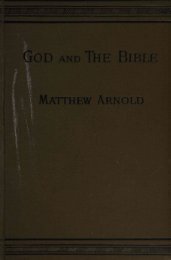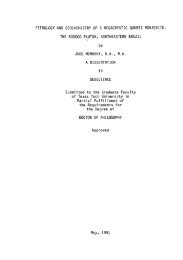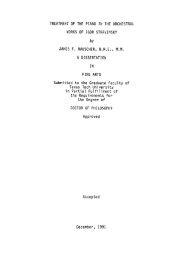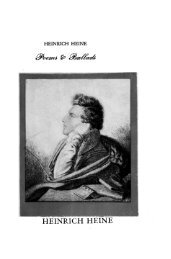THE SOUNDSCORE TO heartBEAT: A NARRATIVE-FORM MUSIC ...
THE SOUNDSCORE TO heartBEAT: A NARRATIVE-FORM MUSIC ...
THE SOUNDSCORE TO heartBEAT: A NARRATIVE-FORM MUSIC ...
You also want an ePaper? Increase the reach of your titles
YUMPU automatically turns print PDFs into web optimized ePapers that Google loves.
9<br />
Before this recitation ends, the sound of someone knocking loudly on a pane of glass is<br />
followed by the sound of a car crash, as the graphic "WINDOWS WTTHOUT PAINS" is<br />
superimposed. These montages of sound and image do not suggest one particular<br />
meaning or experience, but attempt to present constellations of possible meanings.<br />
The Role of Sound<br />
Television Opera<br />
A significant aesthetic dimension of <strong>heartBEAT</strong> is the role sound plays in the work.<br />
Rather than serving in an incidental, background role, sound works dynamically with<br />
visual content and style, communicating not only mood and tone, but the pace of the<br />
dramatic action as well. In this respect, <strong>heartBEAT</strong> resembles opera. In opera, music is<br />
designed to communicate a sung (and often spoken) text, while reinforcing the dramatic<br />
mood and action as well as the symbolic content of the libretto. In <strong>heartBEAT</strong>. music is<br />
augmented with natural, non-musical sounds and electronically processed speech. This<br />
texture is then combined with sequences of visual images which suggest numerous<br />
musico-dramatic dimensions. Though <strong>heartBEAT</strong> does not sound or look like traditional<br />
manifestations of opera, the ontological similarities suggest that it may be regarded not<br />
only as a narrative-form music video, but as a television opera as well.<br />
Synaesthetic Elements<br />
The careful coordination of auditory, visual and conceptual design constitutes a<br />
central aesthetic feature of <strong>heartBEAT</strong>. The synchronization of these elements is<br />
accomplished through a wide variety of structural techniques.<br />
Sound and Visual Edits. Different musical effects were created to reinforce specific<br />
editing techniques. There are musical gestures designed to work with quick edits (the<br />
orchestral hits in Mall Performance One), slow dissolves (the rich synthesizer textures in<br />
the St. SebastianA^enus section), smears (digital effects beneath the fiddle tune as MR and<br />
MS dance), wipes (the record scratch sound during the transition from the Office Dance to<br />
the Star Fantasy), and chromakey effects (the sound montage behind the Star Fantasy).<br />
Leitmotives. <strong>heartBEAT</strong> incorporates a wide array of acoustic and electronic<br />
sounds used in a leitmotivic fashion, reinforcing the repetition of visual, literary, or<br />
conceptual elements. The most important of these is the "Think" motive, symbolized by<br />
the sound of an automobile hom. This motive appears eleven times in a variety of<br />
contexts. The horn is preceded by a drum roll in the opening of each of the four<br />
"Thoughts," and is heard whenever the word is spoken or presented as a graphic. Other



